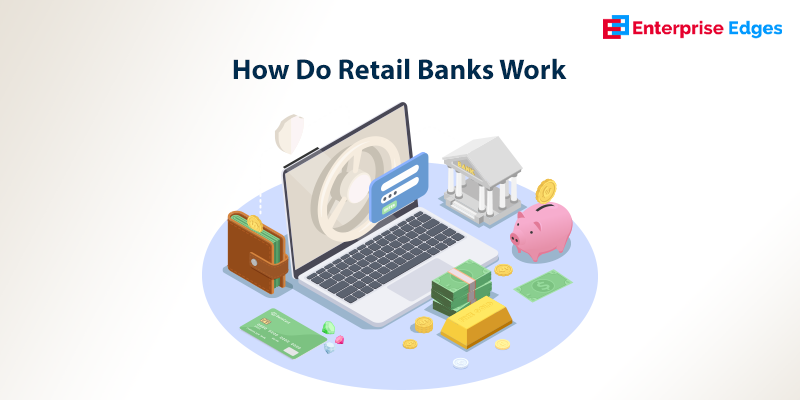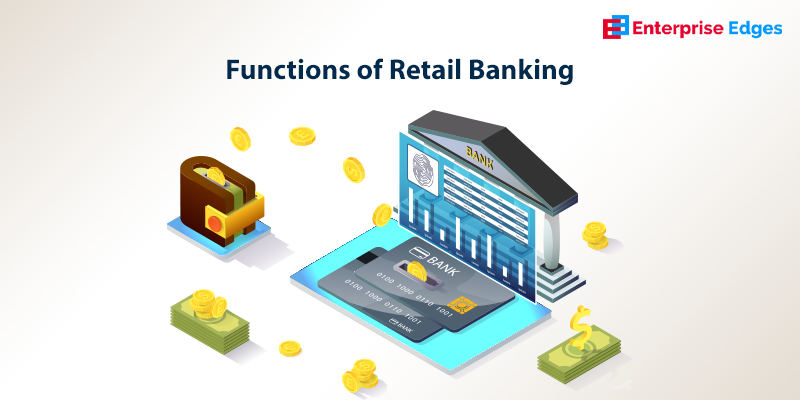Banking is one of the most fundamental functions of every economic society. It is at the core of the financial infrastructure that interlinks cross-border markets and provides a safe platform for financial transactions.
A bank was originally established to meet the market requirements of merchants who required a loan and also served as a depository for federal funds. Over the years banking has evolved and gone through multiple iterations.
Today we have different kinds of banks that meet the varied financial needs of both corporations and individual customers. One such type of banking is retail banking.
This article discusses retail banking in greater detail and also outlines some of the key functions of retail banking.
What is Retail Banking?
Retail banking, also known as consumer banking offers banking services to the general public. In most cases, the primary focus of a retail bank is the personal financial needs of individual customers as opposed to that of large corporations or SMEs.

Retails banks offer essential services such as checking and savings accounts, salary accounts, everyday money management including cash deposits, withdrawals, check clearances, debit cards, credit cards, and so on. In addition to this, retail banks offer different types of loans to help their customers with major purchases such as home, auto, investment property, and so on. A loan against collateral, personal loan, and education loan, locker rentals are a few other examples of services provided by retail banks. Some retail banks also assist their customers with investing in equity markets.
They offer these services through local branches set up across multiple locations. Retail branch banking is available in both urban and rural areas. This wide network of local branches makes retail banking in India extremely accessible and convenient.
Retail Banking Strategy – How Do Retail Banks Work?
Like every other business, retail banks aim to function profitably. A closer look at the retail banking strategy helps us understand how consumer banks make money in exchange for their services.
Retail banks use customer deposits to issue loans and earn interest on these loans. Since retail banks issue different kinds of loans, the rate of interest also varies based on the type of loan. For instance, a home loan will have a different rate of interest, loan tenure, and a different repayment plan compared to an auto loan.

Banks incentivize their customers to maintain a certain amount of deposits for a certain period by promising a steady rate of interest on their deposits. When banks issue loans, they charge a higher rate of interest than what they pay to their customers. For instance, if a bank promises a 4% interest per annum to its depositors, it may issue a home loan at 11%. Consumer loans are one of the primary ways in which retail banking makes money.
Banks also charge a nominal service fee for the services they offer. Monthly maintenance fees, credit card fees, overdraft fees are a few examples. All of these fees, in addition to interest income, contribute to the overall revenue of the bank.
Reserve Bank of India, India’s central bank, regulates most retail banks. One such regulatory example is the Statutory Liquid Ratio (SLR), where the RBI requires retail banks to maintain a certain percentage of their deposits as cash, gold reserves, and other securities. Banks are not allowed to use these reserves to issue loans or for any other spending. The RBI establishes these rules to protect the deposits of the customers.
What are the Functions of Retail Banking?

1. Retail banks create the supply of money in the economy
The loan issued by one bank becomes a deposit in another bank. The deposit hence received is further issued as a loan to another borrower. This cycle of lending and borrowing ensures there is enough money supply in the economy.
2. Retail banks offer credit for consumer spending
Consumer spending is an integral part of the economy. The availability of credit in the form of home loans, auto loans, etc. makes this spending possible. Since credit allows consumers to spend future earnings now, it also generates liquidity in the economy.
3. Retail banks provide a safe place of cash deposits and money management
If banks didn’t exist consumers would not know where to keep their money and would be clueless about how to manage their money. Banks offer a safe place for deposits and offer other financial products that provide a better rate of return for the money that would otherwise be ideal.
Conclusion
We hope this article helped you understand the world of retail banking in a comprehensive manner.
Retail banks, along with other financial institutions act as a key pillar of the society’s financial ecosystem that keeps an economy strong.